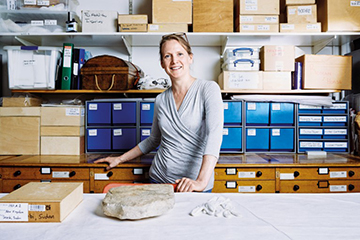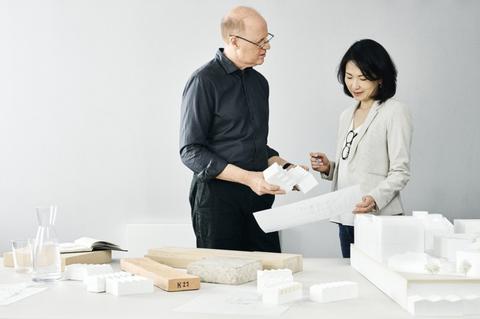Kate Spence – Ancient Towns on the Nile
The past shapes our lives in so many ways. Identities, habits and responses are forged in relation to it, no matter how much we think our eyes are on the future.

I am interested in the influence of landscape, built environment and material culture on past and present experience, and in the potential of settings to mediate and shape encounters and interaction. We experience this on a daily basis in the grounds, buildings and traditions of Emmanuel, and we feel the weight of responsibility to future college members as we work with architects to transform the college with new buildings and social spaces.
My research considers such themes, focusing on the Nile Valley in Egypt and Sudan in the second millennium BC. Sometime around 1350 BC an Egyptian king called Akhenaten decided to change radically traditional religion by focusing state religious practice on the visible sun disk. He built a new centre for his sun cult, government and court at a site in Middle Egypt we now call Amarna, and removed the images and names of the majority of traditional Egyptian gods from temples throughout the land. The archaeology
of Amarna allows investigation of the role of building in effecting change: Akhenaten’s officials worked experimentally, creating ever-larger temples and palaces decorated in a distinctive and novel artistic style, building settings for encounters between the king, his family, courtiers and people. But the site also preserves the remains of hundreds of houses, from those of the richest officials to the poorest of society: this provides a fascinating data set for investigating the lives and interactions of ordinary people living over 3000 years ago.
The remains of Akhenaten’s city at Amarna spread over a vast desert bay east of the Nile, but the site also has a vibrant and rapidly expanding modern population that needs land for housing, agriculture and cemeteries. This creates local tension over the archaeological remains and causes significant issues for the Ministry of Antiquities, faced with the monumental task of managing Egypt’s heritage. Working with the Ministry and the Amarna Project, with funding from the British Council and the Egyptian Science, Development & Technology Fund, we are developing a Site Management Plan for Amarna along with educational and outreach resources in Arabic and English designed for use in the Amarna Visitor Centre and in schools in Egypt, the UK and beyond. We hope that by encouraging positive engagement with past heritage, locals will better recognise the site’s importance.
Right at the beginning of Akhenaten’s reign, a few years before work started on Amarna, a walled town was built by the Egyptian state in Nubia (modern Sudan). Sesebi, as the site is now known, was first investigated in the 1930s but many questions about its nature and role remained. Working with the National Corporation of Antiquities and Museums of Sudan, we have worked at Sesebi since 2008, focusing on the history, architecture and regional setting of the site, as well as its relationship with Amarna.
We have established that the focus of activity at Sesebi was gold mining. Gold was widely used in royal and elite contexts in Egypt, and contemporary diplomatic correspondence shows clearly that gold was central to Egyptian international prestige and gift-exchange with other rulers in the East Mediterranean and Near East. Accessible gold reserves in Egypt had been largely worked out by this time, and Egyptian expansion into Nubia to the south allowed access to far more productive mining areas. Sesebi was a key centre for this activity and remained in use for around a century, supplying the royal coffers and furnishing burials in the Valley of the Kings including that of Tutankhamun (most likely the son of Akhenaten). Sesebi also provides fascinating parallels with Amarna and the opportunity to compare built environment and life at a royal centre with that at a contemporary colonial outpost. Although skeletal remains suggest that life was harsh for ordinary people at both sites, the housing for workers at Sesebi seems surprisingly generous in comparison to that at Amarna. Trying to work out why will keep me very busy over the summer…
Kate Spence (2015), Director of Studies in archaeology and a Tutor, read architecture, has a PhD in Egyptology and is Senior Lecturer in Archaeology. She is a member of the working party liaising with Stanton Williams about our building plans.


